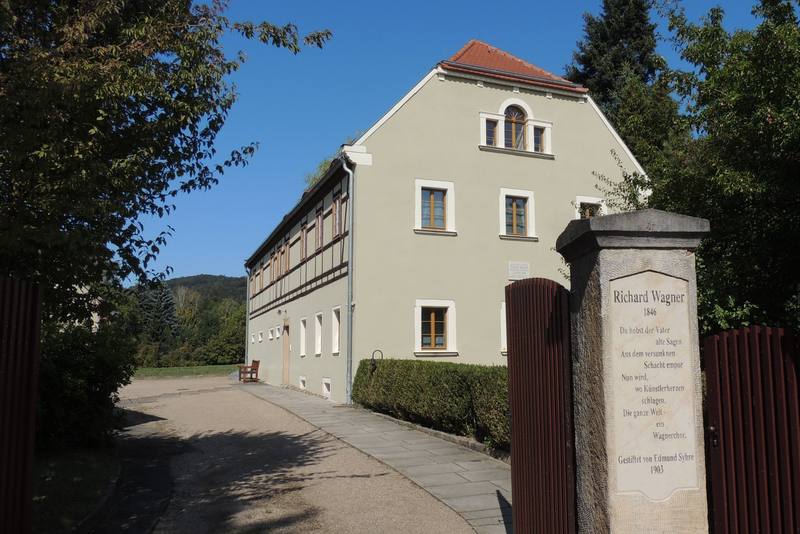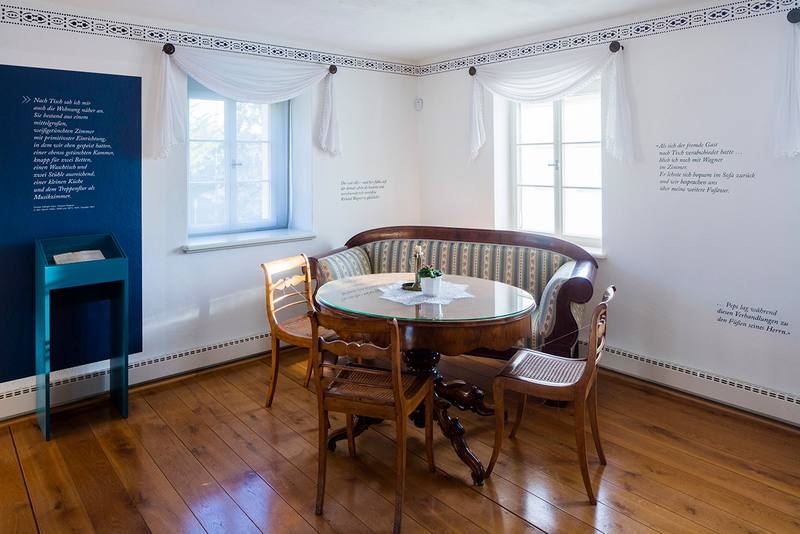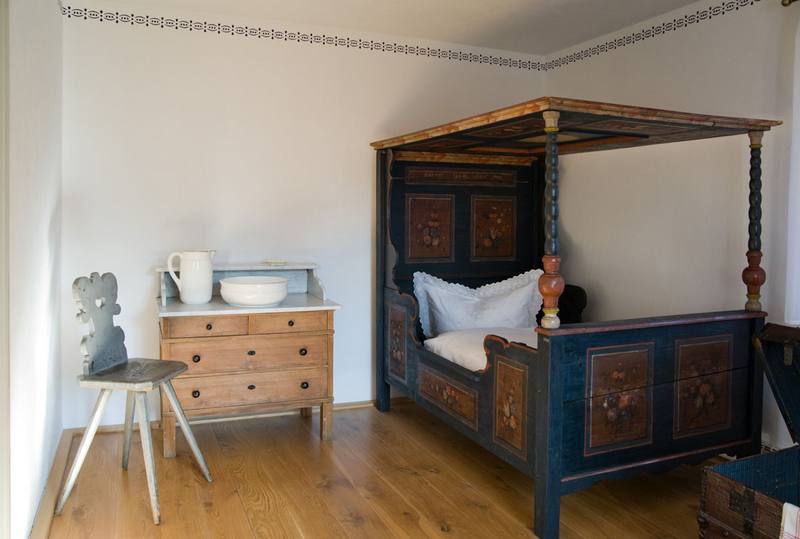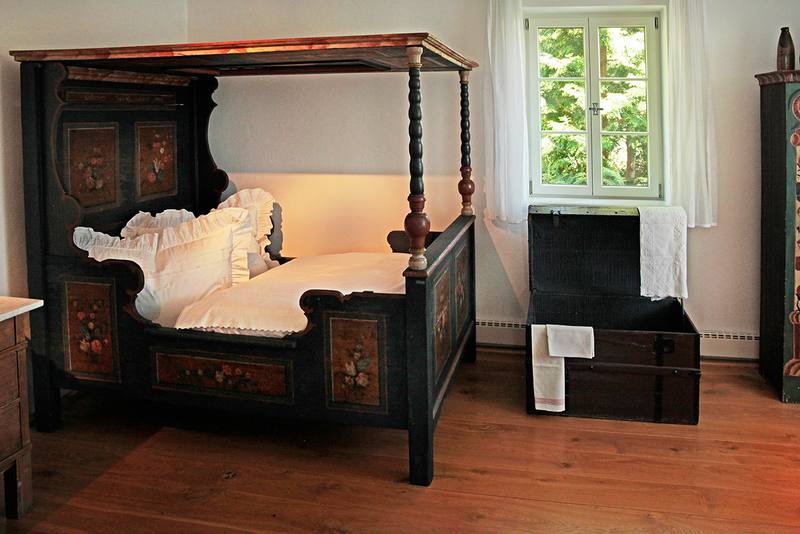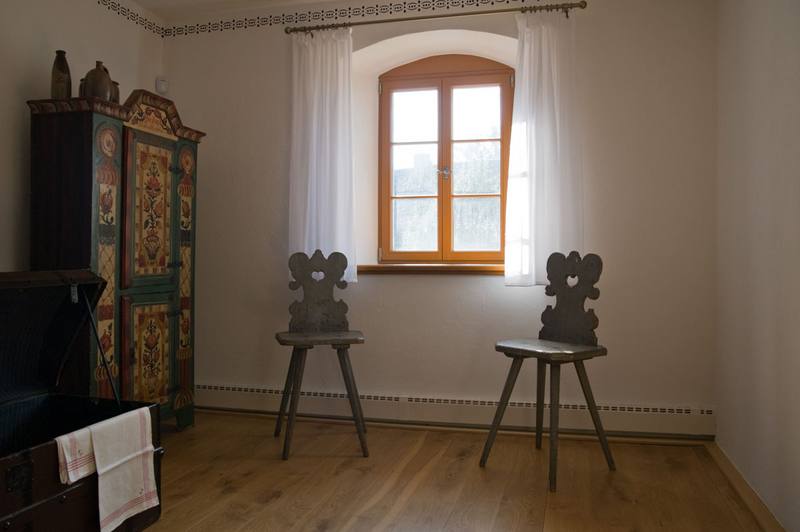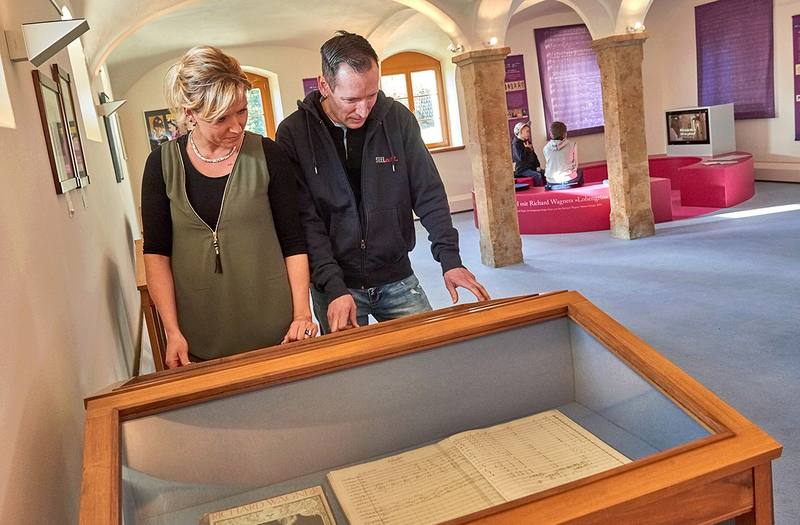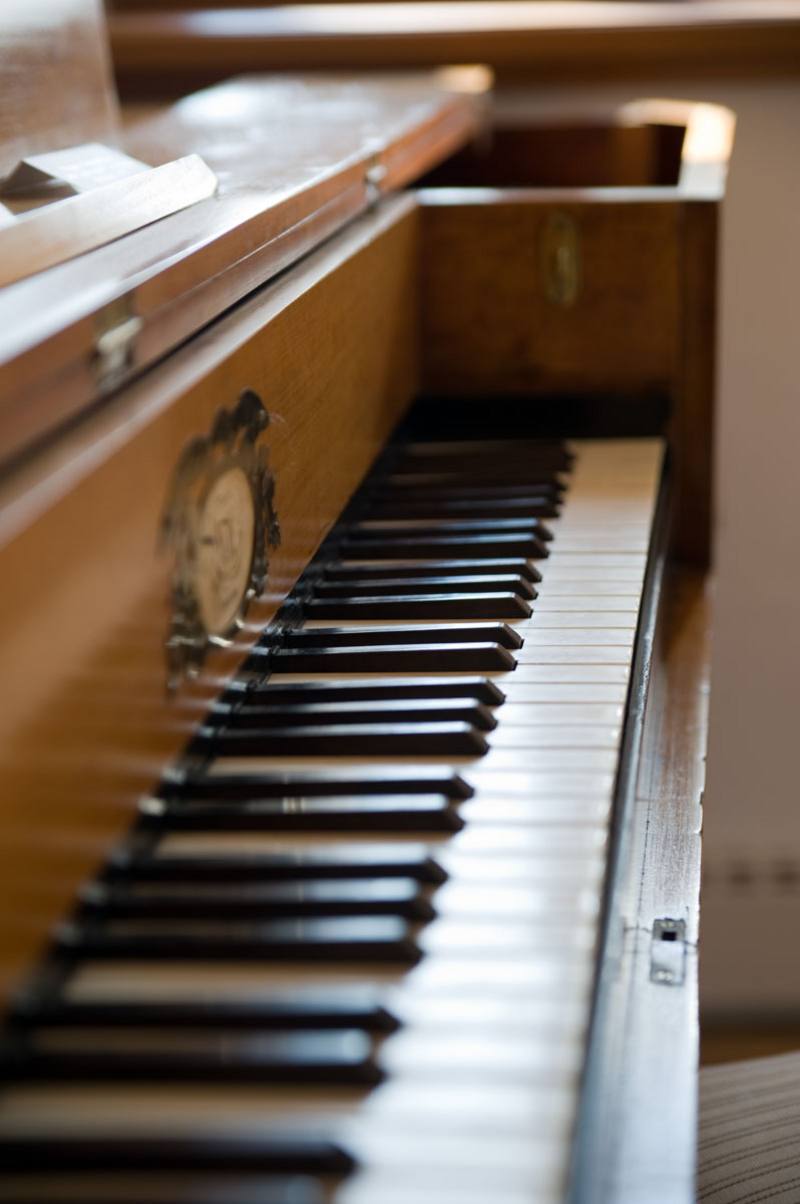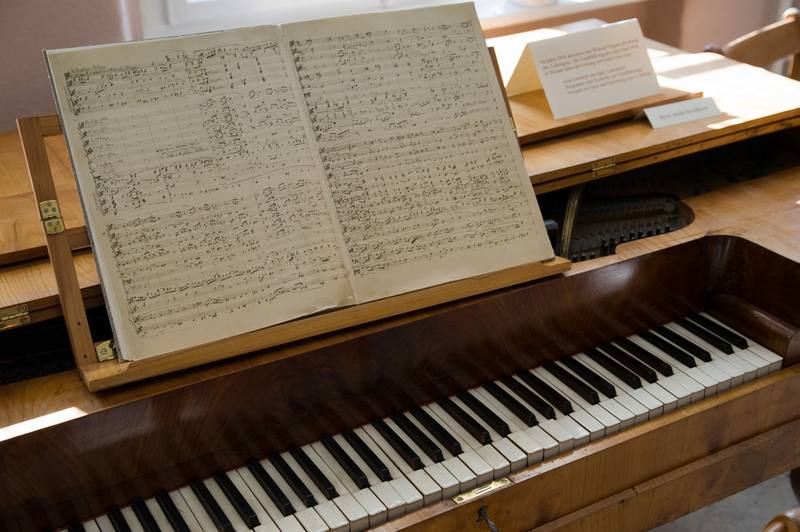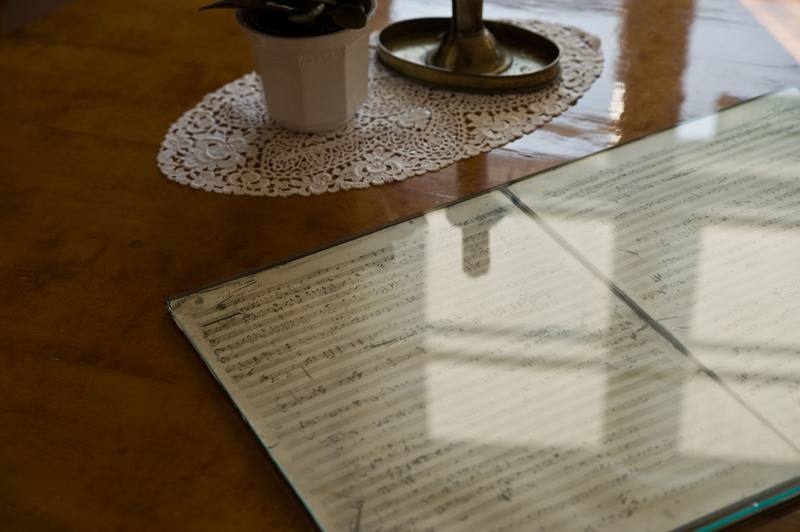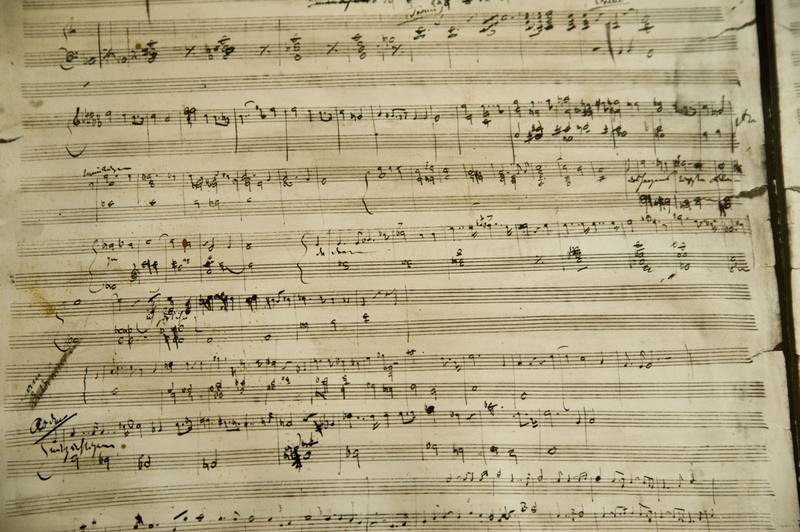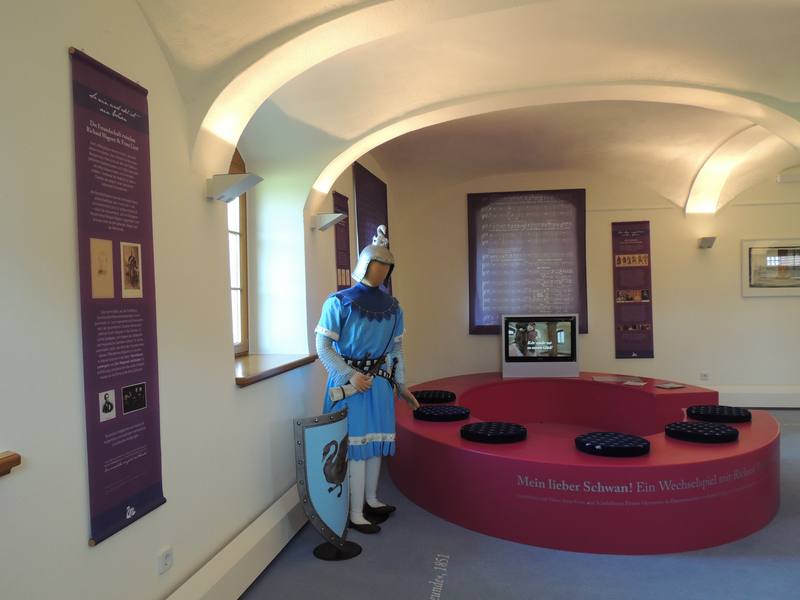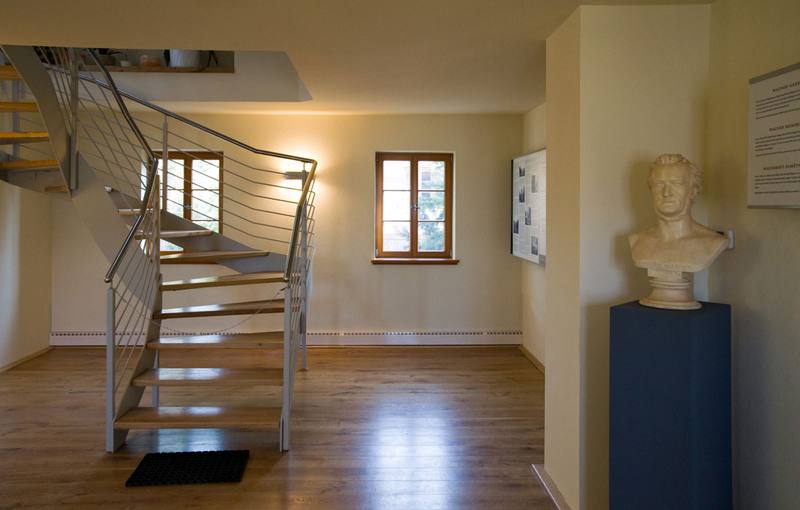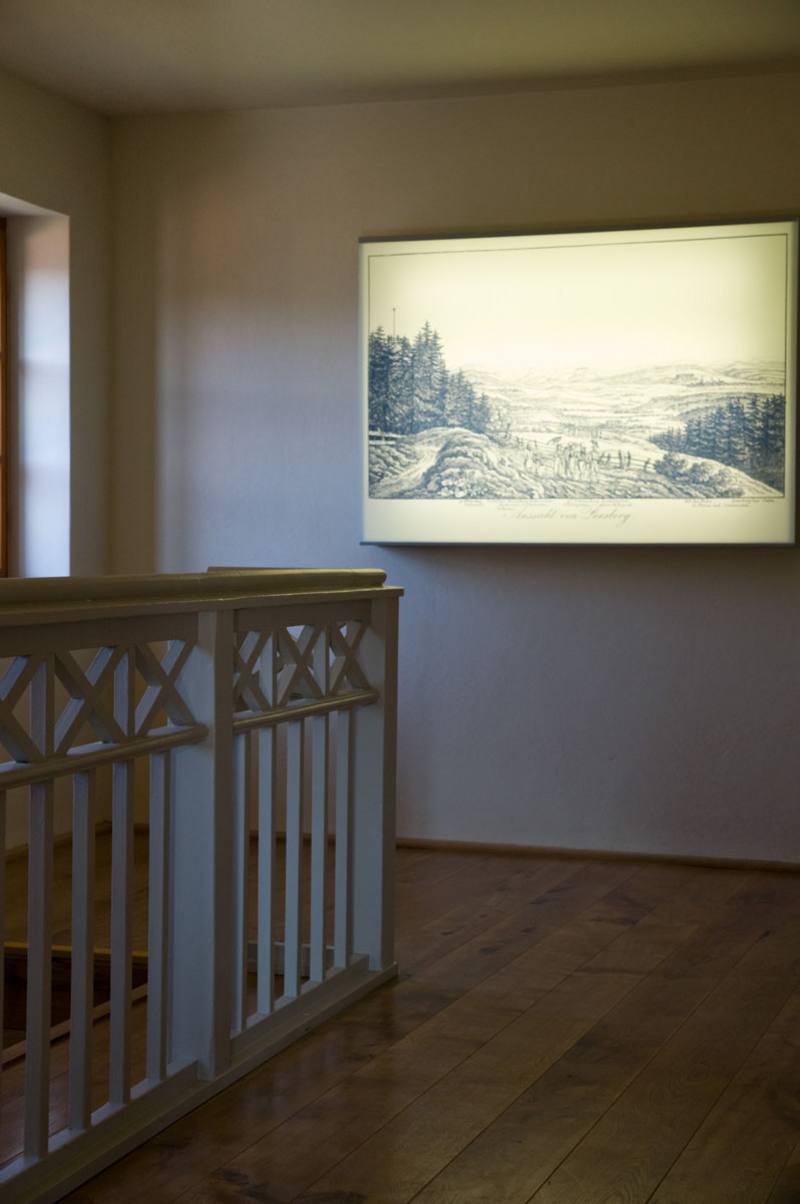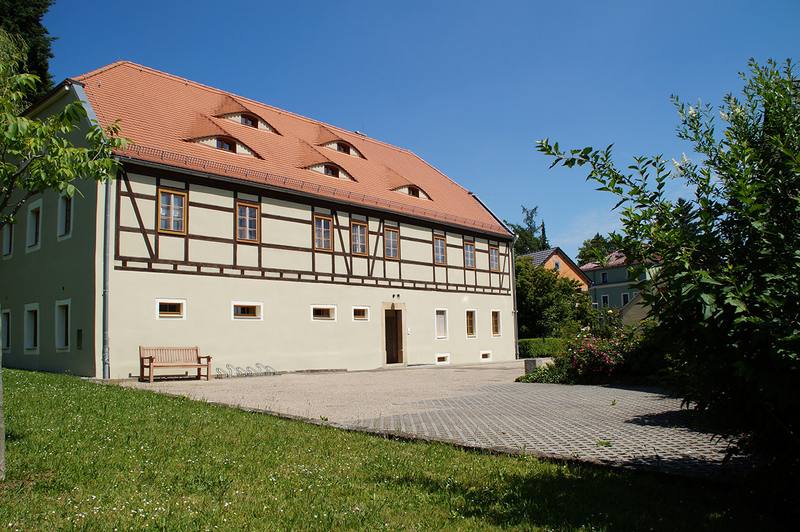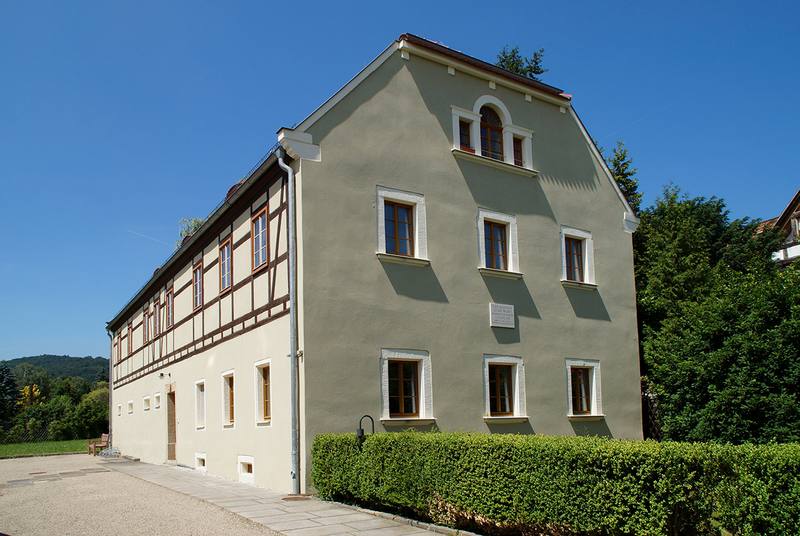Lohengrinhaus
On the initiative of Max Gassmeyer, a Leipzig high school teacher, two museum rooms were established in 1907 to commemorate the stay of the village's most famous guest in the Schäfer farmhouse, the "Lohengrinhaus". It is the oldest authentic Wagner residence that is still used as a museum.
Today, the reconstructed living quarters and an exhibition on the genesis and reception history of the opera "Lohengrin" can be viewed here. Listening stations and information boards in German, English and Czech provide information about Richard Wagner's stay in Graupa.
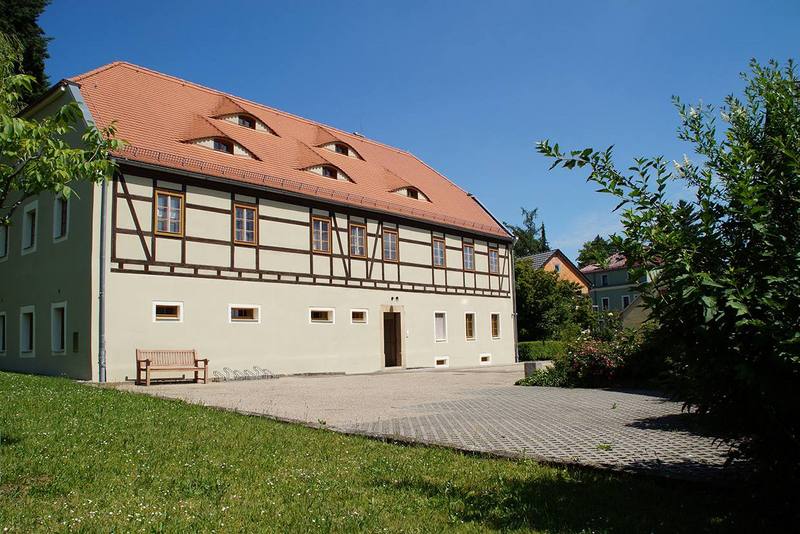
Schäfer's Farmhouse becomes "Lohengrinhaus"
In the Schäfer’s farmhouse, where Richard Wagner sketched the first musical draft for his opera “Lohengrin” during his summer stay in 1846, the Leipzig-born high school teacher Prof. Max Gassmeyer (1864–1935) established two museum rooms in 1907. The avowed Wagner enthusiast used various memorabilia from his own collection to decorate it. These were supplemented by gifts from the composer's family from Bayreuth and other Wagner friends, including the sculptor Gustav Adolph Kietz and the doctor Anton Pusinelli. In the same year, an "Association for the Preservation of the Lohengrin House" was founded, the predecessor of today's Gassmeyer-Förderverein, which supports the museum in many ways.
Gustav Adolph Kietz, aged 83 when the museum was founded, had known the composer personally. He had visited him in Graupa in 1846 and wrote down memories of the meeting and the furnishing of the rooms on the first floor occupied by Wagner. This source formed the basis for the reconstruction of the Wagner floor with living room and bedroom.
"Lohengrinhaus" in Transition
The original exhibition included documents from Wagner's time in Paris, portraits of Wagner and Liszt, festival souvenirs from Bayreuth and, above all, photos of contemporary Wagner singers. Later, theater bills, first editions of Wagner literature, instruments from the former Royal Dresden Orchestra, which were played under Wagner's direction, and most recently one of Wagner's original death masks, were added. In 1982 the museum was reorganized with a focus on the revolution of 1849 and August Röckel, a longtime friend and professional colleague of Richard Wagner.
With the extension of the museum by a permanent exhibition newly designed for the Graupa hunting lodge and a thorough renovation of the Lohengrinhaus, a new exhibition was created here. Now Wagner's summer stay and his opera "Lohengrin" are the focus of the presentation. Listening stations and information boards in Czech, English and German provide information about Wagner's hiking tours, about the opera, which took on musical shape here, and about guests that Wagner received in Graupa. Among them were the 16-year-old Hans von Bülow, accompanied by the violin virtuoso Karol Lipinski, and the actor Ferdinand Heine. Letters that he wrote to contemporaries from Graupa provide information about Wagner's attitude towards life in Graupa and his activities. A booklet accompanying the exhibition provides information about these important testimonies.
Library and Living Area
An extensive media library on Wagner's works rounds off what the Lohengrinhaus has to offer. In addition, two apartments for scholarship holders were establiched on the top floor. Musicians, visual artists and scientists can live and work in the atmosphere shaped by Wagner.
